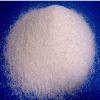- Contact Person : Ms. Wang Lena
- Company Name : Zhengzhou Jing Lian Water Purification Materials Co., Ltd.
- Tel : 86-371-66738153
- Fax : 86-371-66738153
- Address : Henan,Zhengzhou,Room 1034,Futian Plaza D1,Hanghai East Road ,Zhengzhou
- Country/Region : China
- Zip : 450009
zz supply the good sponge iron good quality
Sponge Iron (DRI)
Direct-reduced iron (DRI), also called sponge iron, is produced from direct of (in the form of lumps, pellets or fines) by a reducing gas produced from or coal. The reducing gas is a mixture majority of (H2) and (CO) which acts as reducing agent. This process of directly reducing the in solid form by reducing gases is called direct reduction.
The conventional route for making consists of or plants, , , and . Such plants require high and raw materials of stringent specifications. is needed to make a strong enough to support the burden in the blast furnace. Integrated steel plants of less than one million tons annual capacity are generally not economically viable. The coke ovens and sintering plants in an integrated steel plant are polluting and expensive units.
Specification
Sponge Iron is mainly used as a raw material for speciality steel as well as substitute for scrap. Made from iron ore, sponge iron in itself is not used. It is further processed to make wrought iron. The rise in price of scrap and other factors have led to the increase in the use of sponge iron for making high quality steel.
The quality of sponge iron is primarily ascertained by the percentage of metallization (removal of oxygen), which is the ratio of metallic iron to the total iron present in the product. Sponge iron manufacture is highly sensitive to raw material characteristics.
Therefore, it is essential to examine the chemical and physical characteristics of raw materials, both individually and in combination.
The sponge iron is a key raw material for the manufacture of steel. The appropriate percentage of metallization (removal of oxygen) ensures the high quality of the sponge iron. The percentage of metallization is the ratio of metallic iron to the total iron present in the product.
Use of sponge iron
Sponge iron is not useful in itself, but can be processed to create . The sponge is removed from the furnace, called a , and repeatedly beaten with heavy hammers and folded over to remove the slag, any carbon or carbide and the iron together. This treatment usually creates wrought iron with about three percent slag and a fraction of a percent of other impurities. Further treatment may add controlled amounts of carbon, allowing various kinds of heat treatment (e.g. "steeling").
Today, sponge iron is created by reducing iron ore without melting it. This makes for an energy-efficient feedstock for manufacturers which used to rely upon .
The features and specifications are mentioned below:
Item | Test Data | Item | Test Data |
Activated iron | 98% | Bulky density | 1.7g/cm3 |
Hardness | 5-7 | Non-uniformity Factor | K80≤1.8 |
Porosity rate | 30-50% | Ash | <0.5 |
Other metal content | Within national standard |
|
|
Granularity range | 1.0-5.0 mm |
|
|
Use of sponge iron
Sponge iron is not useful in itself, but can be processed to create . The sponge is removed from the furnace, and repeatedly beaten with heavy hammers and folded over to remove the slag, any carbon or carbide and the iron together. This treatment usually creates wrought iron with about three percent slag and a fraction of a percent of other impurities. Further treatment may add controlled amounts of carbon, allowing various kinds of heat treatment (e.g. "steeling").
Today, sponge iron is created by reducing iron ore without melting it. This makes for an energy-efficient feedstock for manufacturers which used to rely upon .
zz supply the good sponge iron good quality






